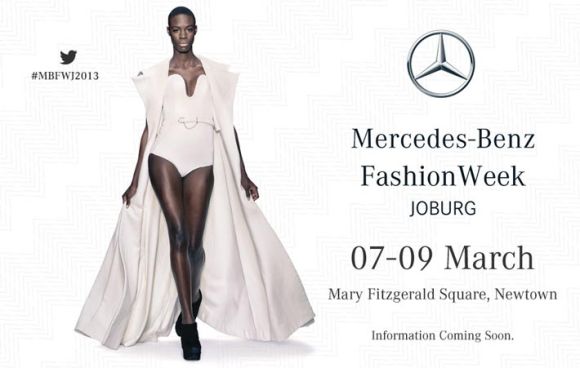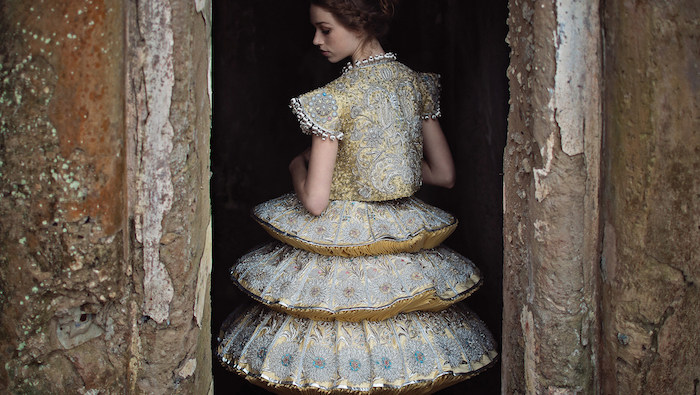 There is no denying that South Africa has too many fashion weeks, all seemingly back to back it makes keeping up a little hard for international fashion media like Ladybrille looking to give local African designers quality visibility. Would we, however, go as far as to say Africa Fashion International (AFI), one of the producers of the numerous fashion shows in South Africa produces shows that is below par with international standards? Errrr . . . No. We think that is quite a leap. While AFI produces way too many shows for our liking and could definitely use great editing/curating of the designers on its roster, they have brought global positive attention from the international media and fashion community to South Africa and Africa’s fashion scene in general. Nevertheless, a New Jersey/New York based event planner and fashion insider who is of Haitian heritage thinks otherwise and has something to say about it. Read on. . .
There is no denying that South Africa has too many fashion weeks, all seemingly back to back it makes keeping up a little hard for international fashion media like Ladybrille looking to give local African designers quality visibility. Would we, however, go as far as to say Africa Fashion International (AFI), one of the producers of the numerous fashion shows in South Africa produces shows that is below par with international standards? Errrr . . . No. We think that is quite a leap. While AFI produces way too many shows for our liking and could definitely use great editing/curating of the designers on its roster, they have brought global positive attention from the international media and fashion community to South Africa and Africa’s fashion scene in general. Nevertheless, a New Jersey/New York based event planner and fashion insider who is of Haitian heritage thinks otherwise and has something to say about it. Read on. . .
“Ciano Clerjuste, founder and president of United Colours Of Fashion, explains why he believes that AFI Mercedes-Benz Fashion Week is not on par with international standards.
First of all, I must say the fashion industry in South Africa needs to understand fully the purpose of fashion week. Hence, I have decided to provide a full history of fashion week from a global standpoint.
The world´s first organised fashion week was held in New York in 1943. Back then it was called “press week”. The event was organised as a tactic of drawing attention away from French fashion during the Second World War. At the time, fashionistas were unable to travel to Paris to see fashion shows. Press week was organised by fashion publicist Eleanor Lambert, with the hope of allowing American fashion designers to showcase their designs to fashion journalists.
Today, the industry has evolved into a mega industry. It now generates R4,3 billion in direct visitor spending per year, bringing up to R7,1 billion in economic impact annually.*
Its current personification started in 1993, when they started combining all the shows into one location at Bryant Park, in midtown NYC (SA can learn from this).
New York Fashion Week draws press delegations from 30 countries. For us in the fashion industry, this is a major press event. It kicks off international fashion weeks, with London, Milan and Paris.
Without a doubt, AFI Mercedes-Benz Fashion Week has a long way to go before it can be compared to New York or Paris. However, everyone in South Africa I asked was pleased with the shows, despite a few let-downs, such as the number of designers who showcased, which was bothersome to me. Unfortunately, Johannesburg, like most young sprawling cities, has a chaotic transportation system, and this sometimes is harder for some international visitors attending all the shows. Hopefully, the city is working hard on making that system better.
Fashion Week in Johannesburg is becoming very important, but not yet on an international scale. Maybe in two or five years from now if everyone pulls well together.
Structure
The structure of AFI Mercedes-Benz Fashion Week in South Africa is great. With Mercedes-Benz as the title sponsor, I am sure visitors will see improvements each season. I hope the AFI leadership can get advice from Cristina Neault, the Executive Producer for Mercedes-Benz New York Fashion Week. I am confident they can trade or exchange some valuable tips from Christina, who is an expert at what she does in NY.
Designers
Out of the 11 shows, only two designers stood out the most for me, which is really sad. The designers who presented two wearable collections were David Tlale and Khothatso Tsotetsi.
Tlale was the only designer who understood the concept of autumn/winter. He presented a cohesive collection. His ready-to-wear collection and use of expensive fabric was breath-taking. As a NY Fashion Week presenting designer, he knows what buyers and international media look for, and he constantly delivers.
Tsotetsi is a brilliant young designer. I have been watching his work for a year now. After watching his show, I was speechless. The craftsmanship of his work deserves the attention of buyers from Barneys New York or Macy’s. He truly understands how to style a collection.
Gavin Rajah, a man I have very high expectations of, did not stand out for me. From the sophisticated collections he is known for, this time he was not up to standard compared to the first time l watched his show in 2007. I was blown away the first time!
This time around, Rajah presented a rather outdated and poorly styled collection from hair, make-up and accessories that didnt go well with most looks. Finishing touches on some of his evening gowns were not up to standard.
Hopefully, he ups his game next time. The show started with models standing in a refugee camp set-up and the producer tried to share a video but the message was lost in translation. Jan Malan, a renowned producer, creates great shows and most producers can learn a thing or two from him.
Destinyconnect.com has the full story.
Founded in 2007, Ladybrille® Magazine is a California based pioneer digital publication demystifying the image of Africans in the west through contemporary African fashion and celebrating the brilliant woman in business and leadership, with an emphasis on the African woman in the diaspora. Our coverage includes stories on capital, access to markets, expertise, hiring and retention, sales, marketing, and promotions.




